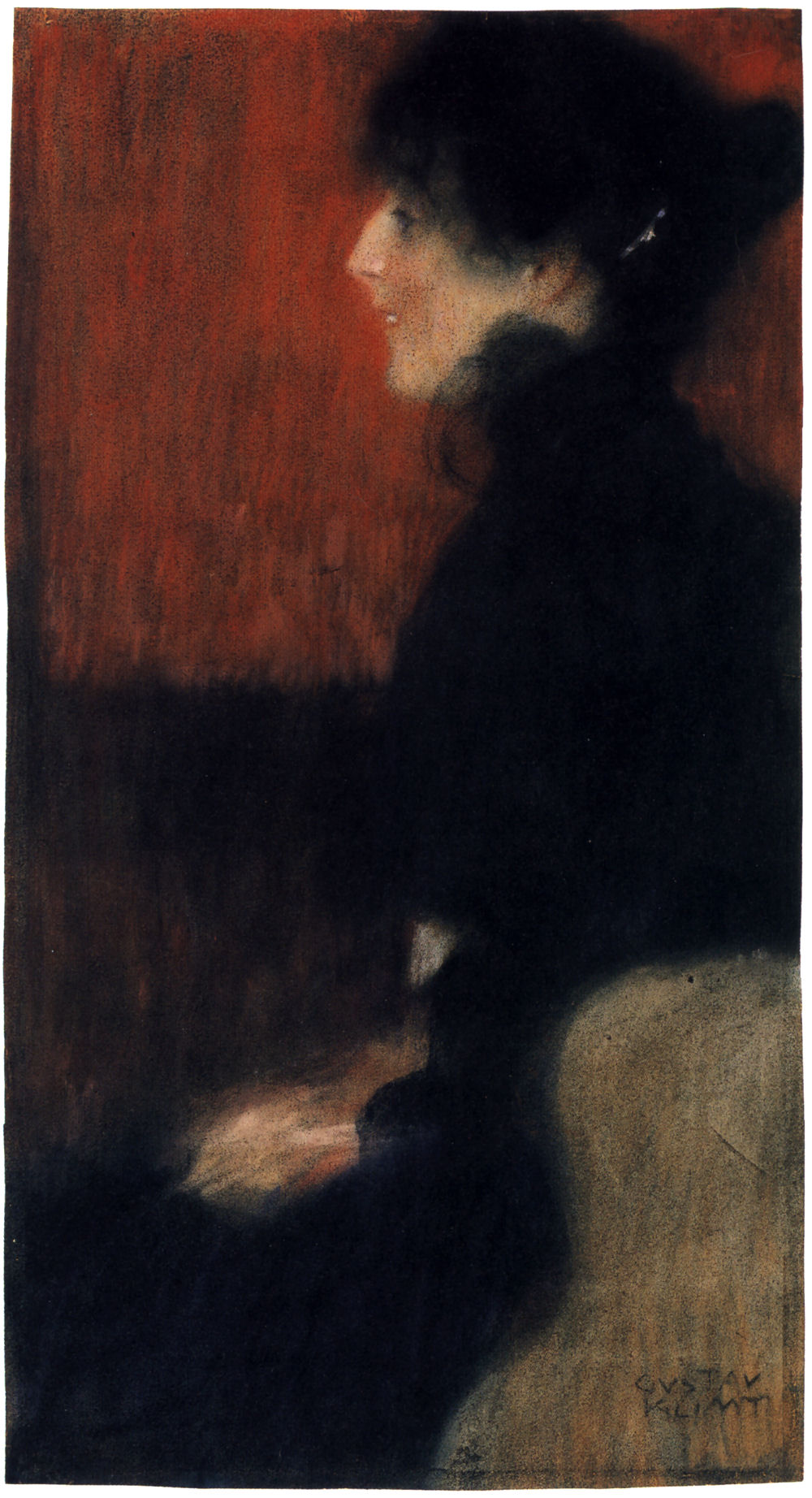art-Klimt.com
Gustav Klimt 1862-1918
Gustav Klimt - Portrait of a Lady 1897
 Portrait of a Lady |
From Allen Memorial Art Museum, Oberlin College:
In Portrait of a Lady, Klimt employs black pastel with sparing red highlights to shroud the sitter in mystery. As in his later Symbolist oil portraits of the women of Viennese society, Klimt excels in suggesting the "smoldering fire" under the elegant, cool façade of a grand-bourgeoise.
Between 1896 and 1898 Klimt created numerous portrait drawings. Apart from a handful of three-quarter views and an even smaller number of frontal portraits, most of these drawings depict the sitter in profile, as in the Oberlin drawing. These drawings were not connected with any specific oil portraits, and Klimt clearly considered them to be independent works of art. In March of 1898 he exhibited the Oberlin drawing in the first Vienna Secession exhibition and published it in the avant-garde journal Ver Sacrum (Sacred Spring), an organ of the Art Nouveau movement.2 Klimt might have considered as models the pastel portraits of Franz von Stuck (1863-1928), which were shown at the exhibition of the Munich Secession in Vienna and published in the journals Jugend and Pan.
Oberlin's Portrait of a Lady exemplifies Klimt's finely detailed use of black pastel crayon to achieve a rich tonal range, from the lightest values for the face and hands to the soft deep blacks of the hair and dress. The background, carefully hatched in greys of different values, provides only the barest indication of the surrounding interior. The restricted, planar space and the monochromatic color scheme suggest the influence of James Abbott McNeill Whistler, whose portrait of his mother (1872; Louvre) has been claimed as a major influence on Klimt's oil portraits of the late 1890s, and certainly had an impact on his drawings as well.
Although Strobl compares the Oberlin drawing to Klimt's drawn allegory of Tragedy of 1897, better comparisons can be found in his Lady at the Fireplace of 1897-98 in Vienna and the Pale Face of 1907-8 in Norman, Oklahoma. Both paintings show seated women and are much closer in style and mood to the Oberlin drawing.
Klimt's portraits of women were usually commissioned by the sitters' husbands or fathers. Often dressed in expensive, one-of-a-kind gowns designed by Klimt's friend, Emilie Flöge, for the Wiener Werkstatten, the sitters were depicted against intricately patterned backgrounds in a style which removed them from reality and elevated them to an aesthetic plane similar to that created in contemporary portraits by Sargent, Whistler, and Anders Zorn. These portraits do not convey psychological insight but represent well-bred, haughty, yet enchanting upper-class women who seem trapped and immobilized by layers of decoration.
While the model in the Oberlin drawing, raven-haired and swathed in black, already conveys the "mystery" of woman--a pervasive theme in Klimt's oeuvre--the work cannot be considered an example of Klimt's mature style. In 1897 Klimt was beginning to turn towards Symbolism. He had just founded and become president of the Vienna Secession, and was receiving critical attention, mixed with protests, for his Symbolist paintings, such as Schubert am Klavier and the allegory of Philosophy(both destroyed during World War II).
D. Hamburger